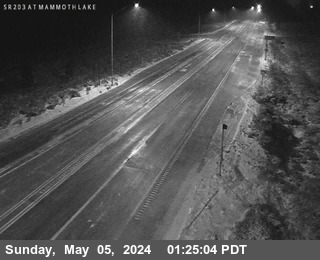Brought to you by Howard Sheckter
Archive for March, 2015
After another very warm day Monday….A slow change to near season temperatures will occur this week with periods of wind beginning Tuesday……Pattern Change this Week will Continue into the Following Week with MJO Support…..
Monday March 30, 2015
Tuesday AM:
No changes for the short-term with winds already up in the high country and cooling moving in. It will be breezy in town (TOML) both today through Wednesday with a high near 59 today and mid to upper 40s Wednesday. Night time lows will be in the teens in many areas by Thursday AM. The weather system responsible for the cooling will brings rains to the pacific NW and as far south as Northern CA. A secondary impulse will bring a slight chance of showers to our region Thursday AM. After that, a break in the pattern of wind before another stronger Trof brings winds and cooling back into our area by Saturday night and Sunday with wind 1st and then cooling Sunday into Tuesday. At the Moment, the favored global models are at odds with each other with the GFS Pretty dry and further north with the Sunday -Mon system, while the Euro continues the threat of snowfall for our area early next week. With that said, the EC did trend drier over night and I guess you could say more toward the GFS solution. So the system for Sunday Monday does not look all that great for snowfall at this time. However there is plenty of time for an adjustment either way. The Dweebs should have much better confidence by Thursday for the Sunday-Monday system. Evidentially the pattern will take more time to develop and thus the next storm cycle is most probably further down the road but not out of the question in April.
Mammoth Pass:
There was a depressing report that came out from the DWP this AM. The updated telemetry showed an inch of water up on the pass. I am sure that they will go up and measure what there is to measure manually today or tomorrow on several areas around the pass to come up with an average or the mean. I do not know which they use.
1 inch of water in the snow pack at this time is equal to 2% of the normal water in the snowpack for April 1st. That is deemed to be the end of the water year here on Mammoth Pass. As a comparison, the driest year on record showed MAMMOTH PASS with about 10 inch’s of water in the snow pack. You do the math…..
This is not only the driest year on record for April 1, but possibly a 1 in >100 year event. Just think, you were alive to experience history from a hydrological perspective. As a comparison, at the opposite end of a time scale, this is probably equal to or greater than a winter of
>300% of normal on the opposite end of the scale, or the equivalent to the projected historic ARC storm winter that may hit the sierra some day or a 1000+ inch winter. The infamous winter of 1969, the greatest winter on record according to DWP records going back to 1940 was 277% of normal. There are plenty of photos around town with the famous areal shot of the Main Lodge being close to buried. That winter is the high bench mark of all winters here in Mono County according to DWP records. I will also add this. Although the siege of storms began the 10th of January of 1969, there were plenty of good storms during the month of December 1968. I have researched the re-analyses 500MB and 250MB charts on that winter…….
_______________________________________________________________________________________________________________________________________________________________________________________________________________________
Most astute WX folks know that model reliability is poor during times of pattern transitions. Especially in a drought year when there is the “possibility” of a pattern of wet and cold in a year of warmth and dryness. After looking at both the deterministic runs of the global models this AM and well as their ensemble members in seeing a pattern change for next week, one would look for other supporting evidence. Such evidence like the forecast of key teleconnection indice changes and other areas of support like the MJO within the Wheeler Hedon, phase space. Using the MJO to see where it is geographically, its strength as well as what and where both the dynamic and statistic models both locate it. The signal is tricky as it can be convoluted with other modes of lower frequency variability like kelvin waves and ERW which can constructively phase or destructively phase with the signal.
After the current episode of the MJO reached record strength on the 16th of March…it has weakened, but still remains a significant signal as it re emerges out over the Indian Ocean with a sigma of about 1.5. It is commonly accepted that when an area of enhanced convection moves over the Indian Ocean beginning with area 70E along or near the Equator south of a meridian that runs through Pakistan, then progressing east through the Maritime Continent and into the far Western Pacific to about 120E there is a “tendency for a Negative PNA state” or a long wave trof is biased to the far west of the CONUS.
What is interesting at this time is that:
1. The ECMWF model has a long wave trof carved out over the Far West next week coinciding with the forecasted location of the convective state of the MJO in phase 3. The Statistical model keeps the signal going into phase space 4, however the dynamic models weakens it rapidly thereafter….
2. This is the first time since last year that a moderate signal is forecasted to move through Phase 3. IE this has not happened in over 3 months. Although contrary to the dynamic models, it may hold together strong enough well into Phase 4 based upon the Statistical Model.
3. The Dweebs use the MJO at times for validation for the week two and week three-time periods which is more related to an interseasonal time scale. This is all in an outlook period or beyond any forecast time frame. So the idea of a wet week next week is a good idea, but too far out to be an actual forecast. Nevertheless it is nice to see last nights run of the ECMWF showing between one and two inches of water EQ for the Sierra west of Mammoth next week up until the 9th.
The forecast for this week shows a gradual cooling trend beginning tomorrow Tuesday through Thursday. There will be periods of wind and we will see the return of over night freezing temperatures on a regional scale by Thursday AM. Daytime highs will be in the 40s on Thursday. The following holiday weekend looks mild with the winds coming up on Easter Sunday. It is what happens beyond Easter Sunday that holds the possibility of a stormy pattern that following week….. (Week Two)
To reiterate my last discussion, there is the potential of the First Significant Cold Storm Cycle this year….next week depending upon how everything sets up including the timing…….. The new 12z ECMWF that is just finishing through 240 hours is looking more bullish today……I will comment further on this outlook late this afternoon….
Stay tuned>>>>>>>>>>>>>>>>>>>>>>>>>>>>>>>>>
The Dweeber…………………………….:-)




